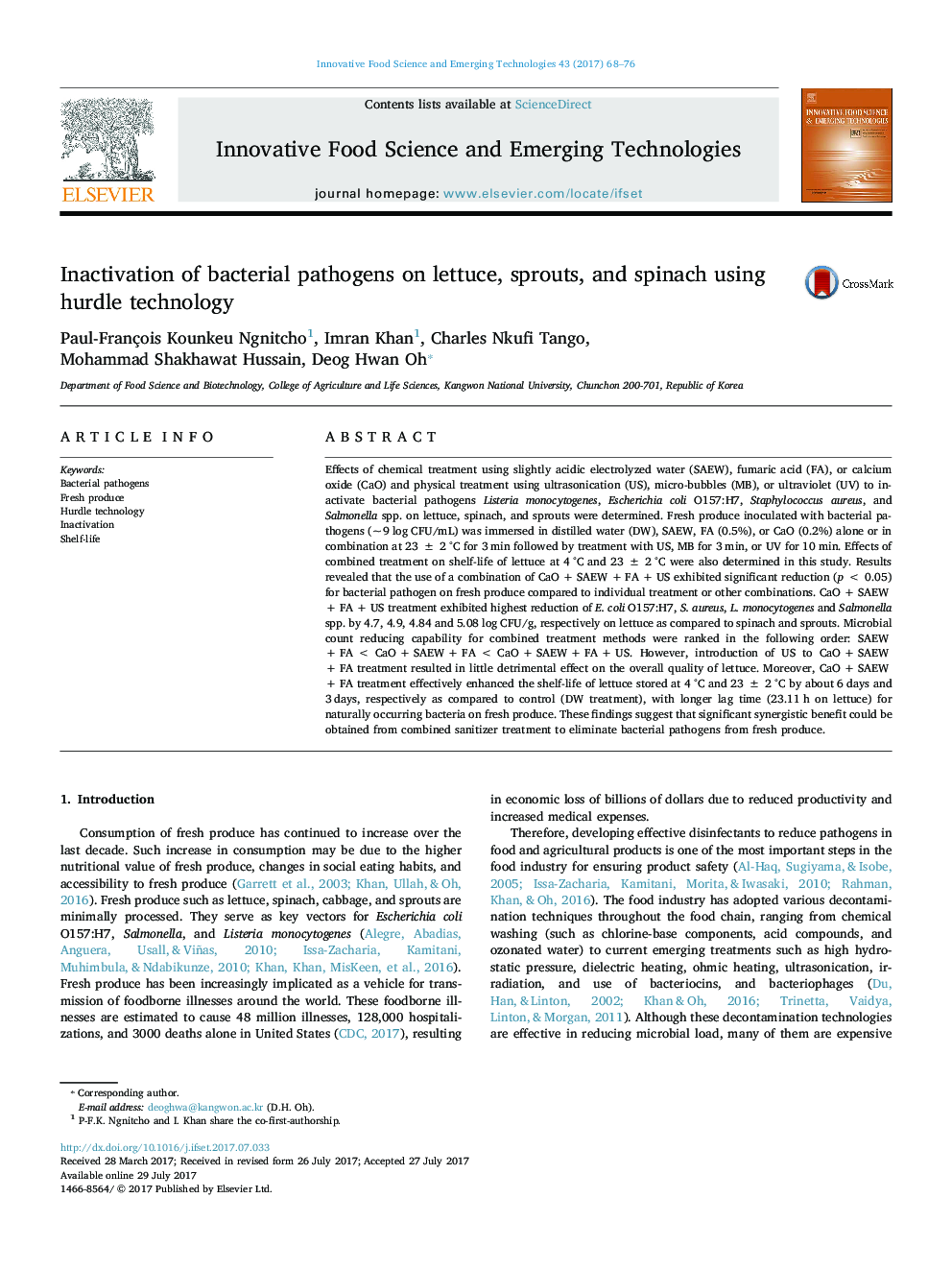| Article ID | Journal | Published Year | Pages | File Type |
|---|---|---|---|---|
| 5521689 | Innovative Food Science & Emerging Technologies | 2017 | 9 Pages |
â¢Hurdle technology has been used in the food industry to ensure food quality and safety.â¢Individual preservative treatments in this study were not as effective as combinations of treatments.â¢Introduction of ultrasonication to CaO+SAEW+FA caused slight detrimental effects in food products.â¢CaO + SAEW + FA treatment has shown higher reduction (~ 4 log CFU/g) and enhanced the shelf life by 6 days at 4 °C.
Effects of chemical treatment using slightly acidic electrolyzed water (SAEW), fumaric acid (FA), or calcium oxide (CaO) and physical treatment using ultrasonication (US), micro-bubbles (MB), or ultraviolet (UV) to inactivate bacterial pathogens Listeria monocytogenes, Escherichia coli O157:H7, Staphylococcus aureus, and Salmonella spp. on lettuce, spinach, and sprouts were determined. Fresh produce inoculated with bacterial pathogens (~ 9 log CFU/mL) was immersed in distilled water (DW), SAEW, FA (0.5%), or CaO (0.2%) alone or in combination at 23 ± 2 °C for 3 min followed by treatment with US, MB for 3 min, or UV for 10 min. Effects of combined treatment on shelf-life of lettuce at 4 °C and 23 ± 2 °C were also determined in this study. Results revealed that the use of a combination of CaO + SAEW + FA + US exhibited significant reduction (p < 0.05) for bacterial pathogen on fresh produce compared to individual treatment or other combinations. CaO + SAEW + FA + US treatment exhibited highest reduction of E. coli O157:H7, S. aureus, L. monocytogenes and Salmonella spp. by 4.7, 4.9, 4.84 and 5.08 log CFU/g, respectively on lettuce as compared to spinach and sprouts. Microbial count reducing capability for combined treatment methods were ranked in the following order: SAEW + FA < CaO + SAEW + FA < CaO + SAEW + FA + US. However, introduction of US to CaO + SAEW + FA treatment resulted in little detrimental effect on the overall quality of lettuce. Moreover, CaO + SAEW + FA treatment effectively enhanced the shelf-life of lettuce stored at 4 °C and 23 ± 2 °C by about 6 days and 3 days, respectively as compared to control (DW treatment), with longer lag time (23.11 h on lettuce) for naturally occurring bacteria on fresh produce. These findings suggest that significant synergistic benefit could be obtained from combined sanitizer treatment to eliminate bacterial pathogens from fresh produce.
